From its chaotic recent past, Colombia has emerged as a popular travel destination.
A line of Colombians clasping bouquets of carnations, roses and lilies forms in the quiet of the nearly deserted Central Cemetery in Bogota. Not far from the alley of the lonely tombs of Colombia’s presidents sits a polished bronze statue, a somewhat less-artistic version of Rodin’s Thinker, flanked by a serious middle aged man in a crisp tailored suit whispering intently into the statue’s ear. Seated near the statue sits a robed “priest” (I am told he is not ordained) who has set up a card table and reads a Mass, for which he is paid by supplicants. He rings a bell to indicate the man’s time is up.

Sarah Fleming
Scores of bouquets have been left around the statue, covering the grave of the long-dead man, which is said to have been endowed with the power to grant wishes. There are many stories of his posthumous prowess in fulfilling desires, bestowing love, healing the sick and easing financial or emotional distress. One young man tells me of his frustrating job search. He made a pilgrimage to the statue and petitioned for help. Right after making this request, a sudden breeze arose around the gravesite, lifting leaves and flowers into a mini swirl. He took this as a sign that his wish had been heard. Only two days later, he received an overseas call with a job offer from an international firm in Miami.
Such is the magical realism you might find in a Gabriel Garcia Marquez novel. In fact, this is the grave of Leo Kopp, my great-grandmother Ida’s brother. Leo Kopp was a German Jewish agnostic, who immigrated to Colombia and founded the Bavarian Brewery—now South America’s second largest brewery—in the late 19th century.
This is my first trip to Colombia. For five generations, my family in North and South America has more than kept in touch. We have become good friends. Our friendship was forged in the 1990s when Colombia was plagued with violence. Murders and kidnapping—from both guerrilla and drug wars—convinced my cousins to move their children, who were my kids’ ages, up to New York. We spent many fun, multi-generational holiday dinners together and, since they returned to a safer, saner Colombia, we continue the family tradition of keeping in touch.

www.istockphoto.com
CARTAGENA HOTELS & RESTAURANTS
If you are drawn to Caribbean beaches and snorkeling, you can take a boat to the islands (Islas del Rosario), where one can either spend the day or the night. The Santa Clara Hotel has a sister hotel in the islands, the Hotel Majagua. For travelers who prefer smaller boutique hotels, villas or B&B’s, Cartagena offers quite a few, including Tcherassi Hotel, Hotel Casa del Arzobispado, Hotel LM, Ananda Hotel Boutique and Hotel Casa San Agustin. It’s also a good idea to make dinner reservations at some of the better restaurants, including La Vitrola, Don Juan, Harry Sasson Bar at the Hotel Santa Teresa, La Vera, Juan del Mar, Cafe del Santisimo, 8-18, Alma, Café San Pedro, Restaurante Club de Pesca and Fuerte de San Sebastián del Pastelillo.
For years, Colombia was off the tourism radar. Recently, however, travel stories have been cropping up in The New York Times, The Wall Street Journal and The London Times. Even Bergdorf Goodman’s 2015 spring fashion magazine ran a two-page story on the picturesque coastal city of Cartagena. Though still a relatively well-kept secret, Colombia is fast becoming a go-to destination.
As well it should be. Colombia is a country rich in history, geography and diversity. From the haciendas of the coffee region, to the coast that stretches from the Pacific to the Caribbean Sea and Atlantic coast, from the Amazon River jungle, to the Andean Mountains, Colombia offers many climates and experiences within an hour’s plane flight of the capital city of Bogota.
CARTAGENA
Cartagena, a fortressed town on the Caribbean, is the country’s most tourist-friendly. It offers an array of large resorts, boutique hotels and hostels within the old town, which has been designated a World Heritage site by UNESCO. With its bright pink, ochre, salmon and sky-blue painted villas, old town Cartagena is “Cuba Lite,” without visa complications.

Sarah Fleming
On our most recent visit, we stayed at the Sofitel Santa Clara, one of the two best luxury hotels, the other being Hotel Santa Teresa. Built within the thick historic walls of the 1621 Franciscan convent of the nuns of Santa Clara, the Hotel Santa Clara successfully blends traces of its past with modern amenities. Alongside the original convent chapel, wells, crypt and confessional booths is a lush courtyard punctuated with a reclining nude holding an apple by sculptor Fernando Bortero—a plus-size Eve in paradise. In contrast to the building’s former monastic life, the Santa Clara offers a spa, as well as an Olympic-sized pool with attendants happy to serve you snacks and fruit drinks. You’ll need to plan your trip early. When we called for a reservation a month in advance, the town was booked—with multiple destination weddings, conferences and a golf tournament. In addition to being a tropical getaway, Cartagena plays host to music, film and literary festivals in the winter months. By some stroke of luck (thank you, Leo Kopp?) we snagged the last accommodation at the 123-room hotel.
Formerly a strategic harbor—where the galleons of the Spanish conquistadors were loaded with pillaged treasures of gold, silver and gems to be shipped in heavily armed convoys back to Spain—Cartagena has seen quite a bit of action over the centuries. Under Spanish colonial rule, it functioned as a slave-trade center and endured catastrophic fires, pirate attacks and battles for independence. It witnessed a civil war, decades of political strife and an economic downturn at the end of the 20th century. And speaking of action, you may recall that Cartagena was in the headlines for some Secret Service indiscretions prior to a conference visit from President Obama, and also for an infamous selfie that featured a snoozing Justin Bieber.
As Monty Python once said, nobody expects the Spanish Inquisition. And it’s true. We were surprised to learn that for much of the 17th century, friendly Cartagena was one of three South American seats of the Spanish Inquisition. Here, tribunals condemned heretics and practitioners of witchcraft. A visit to the building known as Palacio de la Inquisicion confirms this fact. It houses a museum of the Inquisition’s relics, ranging from a device that determines if the accused was a witch (innocent or not, you die either way) along with assorted instruments of torture.

Sarah Fleming
Whatever the challenge, like a phoenix, Cartagena has risen from rubble over and over. Ten years ago, for example, the old section was a poverty-stricken barrio. Today, you can safely walk the circumference of the old city and gaze out on the bay from the thick fortification wall, a defense built after Sir Francis Drake plundered Cartagena and held it for ransom in 1568. Within the ramparts, you will find brightly painted villas covered in bougainvillea which line narrow streets of fruit-vending carts, stores selling Colombian crafts, and restaurants offering fresh-caught fish carpaccio and ceviche, with the sound of Cuban salsa drifting through the air. Cartagena is punctuated with lovely tree-shaded plazas, including the Plaza Santo Domingo, with a reclining plump nude Botero bronze.
BOGOTA
In stark contrast to the sleepy Caribbean resort town of Cartagena is Bogota, an easy 70-minute flight away. A teeming metropolis of 7 million people situated 8,660 feet above sea level, Bogota’s climate is a temperate 40 to 70 degrees. This Andean city has emerged from decades of guerrilla war, drug trafficking and kidnappings to become a vibrant cosmopolitan center. A sign of the times is that many international hotel chains are investing in Bogota. The Four Seasons Hotel is renovating two additional properties there.
 SAFETY FIRST
SAFETY FIRST
Yes, peace has come to Colombia. No more need for bulletproof cars or bodyguards. That’s not to say that you can totally let down your guard. While Cartagena is safe even at night in many sections, guidebooks still caution visitors to Bogota to leave their passports in the hotel safe, not to wear valuable jewelry or flaunt expensive cameras, and to beware of pickpockets. Of course, the same warning could also apply to the New York City subways. While visiting high Masses in churches in La Candelaria, a woman approached my cousin suggesting she turn the stone of her small diamond ring around. Random taxis are also to be avoided—your hotel can give you an app to contact a reliable car service.
 SO WHAT EXACTLY HAPPENED?
SO WHAT EXACTLY HAPPENED?
The changes in Colombia over the last dozen years have been nothing short of astonishing. The peace process initiated by President Alvaro Uribe (2002–2012) led to the demobilization of guerilla and paramilitary groups, which in turn gave the government control of the nation’s drug-producing regions. This further reduced the level of danger and violence. About a year ago, the Colombian government met in Cuba with representatives of the rebel group FARC to hammer out an agreement to keep the peace permanently. The country has a robust economy, with an oil industry that cranks out a million barrels a day. In the last few years, nearly a million Colombians have been lifted out of poverty, and economic reforms have been put in place that aim to lift millions more.
Home to many libraries, museums and universities, Bogota is known as the “Athens of South America.” Many of the finer institutions are housed in the Centro, as well as Bogota’s old section, La Candelaria, which dates back to the 16th century and features the ornate, colonial-era cathedral and churches that border Plaza de Bolivar. Not to be missed in La Candelaria are two world-class museums. The Museo del Oro artistically displays over 55,000 pieces of gold from the pre-Colombian era, while Museo Botero exhibits Botero’s signature rotund people, fruit, animals and birds, as well as the sculptor’s first-class collection of impressionist and modern art, including works by Monet, Matisse, Degas, Picasso, Balthus, Klimt, Moore and Calder. Besides being a quirky, prolific artist, Fernando Botero had a terrific eye for other artists’ work. A perfect conclusion to a day in La Candelaria is dinner on the rooftop patio of the Hotel de la Opera, which overlooks the tops of churches and the Palace of Justice.
On the recommendation of my cousins, we stayed at the Sofitel Bogota Victoria Regia on a street with very good restaurants. We particularly enjoyed Primi, an Italian restaurant located across the street from the hotel.
The food scene in Bogota is growing rapidly. We liked the light crust pizzas at Julia’s, a popular hole-in-the-wall pizzeria, the grilled meat and Latin beat of Andres, and the Peruvian-Chinese fare at Maman Tusan’s in Usaquen, a picturesque old village within the northern border of the city.
Bogota has several high-end shopping malls. The top (3rd) floor of El Retiro shopping center has a Colombian food court called La Plaza de Andres with reasonably priced meals. If you’re looking for pre-Colombian-inspired jewelry, L.A. Cano in the Centro Andino shopping mall offers some affordable and attractive earrings and necklaces. Or if you are looking for indigenous crafts, Artesanías de Colombia is a reliable resource.
Back at the Central Cemetery on my last day in Colombia, it’s finally my turn to leave a bouquet of roses at Leo Kopp’s statue. Together with my cousin, we step up on either side and each whisper in his ear. That the strong family Colombian connection lives on through future generations, I’m sure Leo and Ida would be very, very happy.

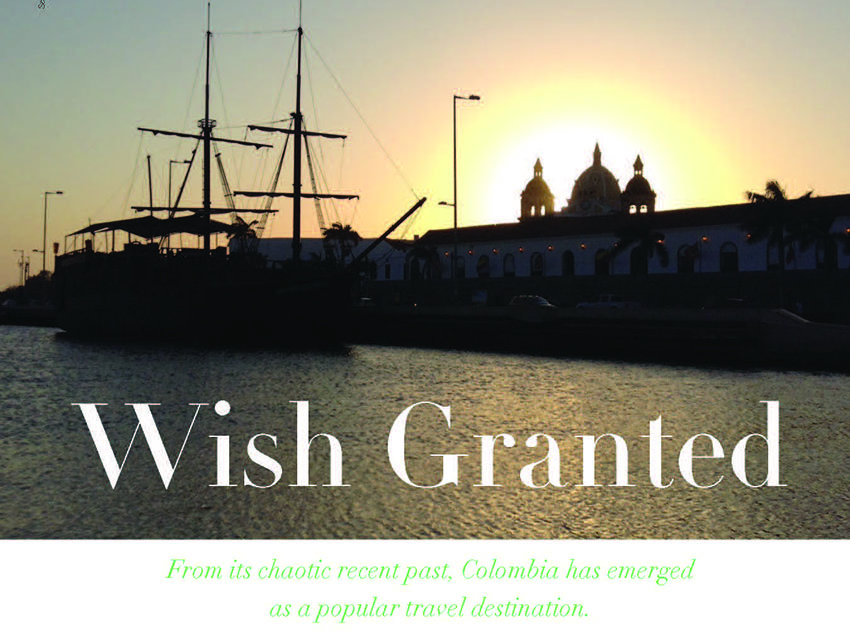









 INSIDE OUT
INSIDE OUT

 Exercise in a Wrapper
Exercise in a Wrapper
 Down and Dirty
Down and Dirty Going Green
Going Green
 Is Paleo Diet Hard to Swallow?
Is Paleo Diet Hard to Swallow?
 Do you have a hot topic for Dr. D’Angelo and his Trinitas ER team?
Do you have a hot topic for Dr. D’Angelo and his Trinitas ER team?
 The Office Beer Bar & Grill • Asian Seared Tuna Steak
The Office Beer Bar & Grill • Asian Seared Tuna Steak  Paragon Tap & Table • Goat Cheese Panna Cotta
Paragon Tap & Table • Goat Cheese Panna Cotta  A Toute Heure/100 Steps Supper Club & Raw Bar • Catch of the Day
A Toute Heure/100 Steps Supper Club & Raw Bar • Catch of the Day The Office Beer Bar & Grill • Crispy Asian Chicken Wontons
The Office Beer Bar & Grill • Crispy Asian Chicken Wontons  The Black Horse Tavern & Pub • Seasonal Seared Veal Chop
The Black Horse Tavern & Pub • Seasonal Seared Veal Chop 
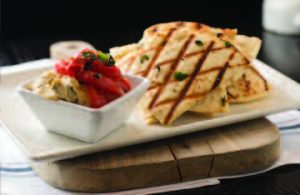 The Office Beer Bar & Grill • Mediterranean Hummus Platter
The Office Beer Bar & Grill • Mediterranean Hummus Platter  George and Martha’s American Grille • Grilled Steak Sandwich
George and Martha’s American Grille • Grilled Steak Sandwich  The Office Tavern Grill • Rare Seared Ahi Tuna
The Office Tavern Grill • Rare Seared Ahi Tuna Daimatsu • Toro Tartare
Daimatsu • Toro Tartare Publick House • Grilled Swordfish
Publick House • Grilled Swordfish  Morris Tap & Grill • Duck Quesadilla
Morris Tap & Grill • Duck Quesadilla Thai Amarin • Salmon Panang
Thai Amarin • Salmon Panang  The Office Beer Bar & Grill • Pulled Pork Potato Skins
The Office Beer Bar & Grill • Pulled Pork Potato Skins  Café Z • Hot “Z” Shrimp
Café Z • Hot “Z” Shrimp  Chestnut Chateau • Braised Lamb Shanks
Chestnut Chateau • Braised Lamb Shanks Mario’s Tutto Bene • Vinegar Pork Chops
Mario’s Tutto Bene • Vinegar Pork Chops  Rio Rodizio • Brazilian Meats
Rio Rodizio • Brazilian Meats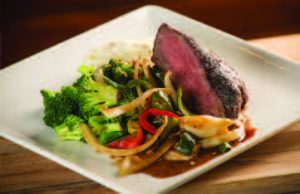 The Manor • Duet of Foie Gras
The Manor • Duet of Foie Gras
 RAISING THE BAR
RAISING THE BAR
 SQUARE DEAL
SQUARE DEAL WALL FLOWERS
WALL FLOWERS SEED OF AN IDEA
SEED OF AN IDEA ROLLING STONES
ROLLING STONES ROCK STAR
ROCK STAR THAT’S NUTS!
THAT’S NUTS! SEAT OF POWER
SEAT OF POWER VINTAGE GLASS
VINTAGE GLASS HAND IN GLOVE
HAND IN GLOVE BASKET CASE
BASKET CASE






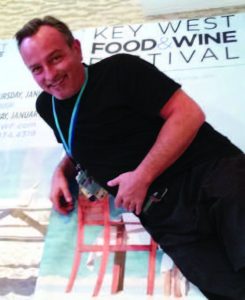 The last week in January is a particularly popular time to visit Key West, especially for sun-worshipping foodies. That’s when the sleepy town perks up for the Key West Food & Wine Festival, which just completed its sixth spin around the block (the block being Duval Street, main drag of the Conch Republic). The brainchild of local legend Marc Certonio (left), the Wednesday-thru-Sunday gathering is, happily, still something of a well-kept secret. There are more than 30 different events, including various strolls, tastings and beach parties—but with dozens, not a mob of hundreds. Also, Certonio has cultivated strong relationships with wine purveyors and wine makers, so you’re likely to see wines of small production and hard-to-find beauties. This year, Archery Summit, Foxen and Byron wines were being poured.
The last week in January is a particularly popular time to visit Key West, especially for sun-worshipping foodies. That’s when the sleepy town perks up for the Key West Food & Wine Festival, which just completed its sixth spin around the block (the block being Duval Street, main drag of the Conch Republic). The brainchild of local legend Marc Certonio (left), the Wednesday-thru-Sunday gathering is, happily, still something of a well-kept secret. There are more than 30 different events, including various strolls, tastings and beach parties—but with dozens, not a mob of hundreds. Also, Certonio has cultivated strong relationships with wine purveyors and wine makers, so you’re likely to see wines of small production and hard-to-find beauties. This year, Archery Summit, Foxen and Byron wines were being poured.
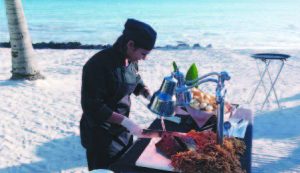 WEDNESDAY
WEDNESDAY THURSDAY
THURSDAY FRIDAY
FRIDAY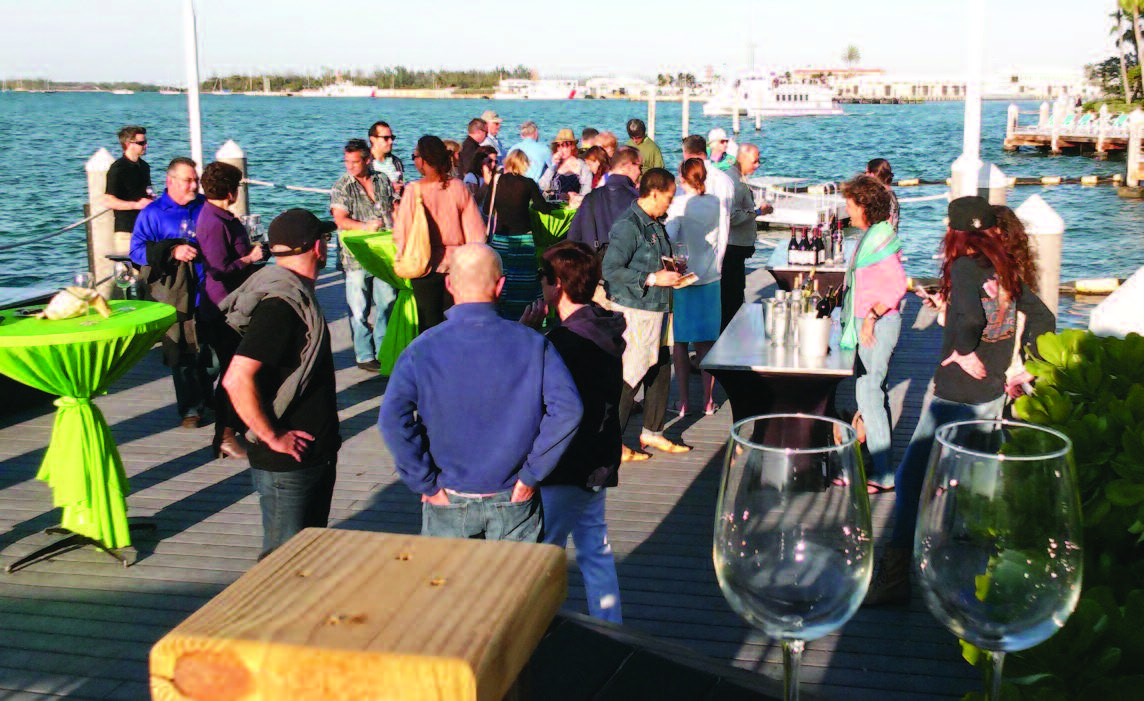
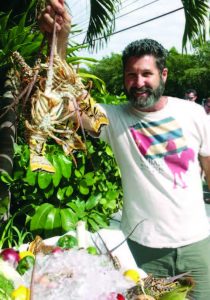 On Marc Certonio’s advice, we snagged a pair of tickets to the event at Charlie Mac’s, a local spot that has some of the best food in town. Juan Hernandez (right), the southeastern director for Domaine Select wines, was conducting a six-course, six-wine dinner for 30 people. I don’t even know where to begin, but suffice it to say that when the braised pork and pasta dish came out paired with a semi-dry Lambrusco, my eyes rolled back into my head. That was course four or five. At some point, Juan decided that seven courses was better than six; either that, or I just lost track. Chef Michael Schultz was the man behind the culinary madness. He is the chef for Pat Croce’s various restaurants and establishments in Key West and he has an unbelievable talent for all things fish. If you do one thing when you come down to Key West, eat at one of Chef Mike’s establishments (my favorite is the Turtle Kraals cevicheria at the marina).
On Marc Certonio’s advice, we snagged a pair of tickets to the event at Charlie Mac’s, a local spot that has some of the best food in town. Juan Hernandez (right), the southeastern director for Domaine Select wines, was conducting a six-course, six-wine dinner for 30 people. I don’t even know where to begin, but suffice it to say that when the braised pork and pasta dish came out paired with a semi-dry Lambrusco, my eyes rolled back into my head. That was course four or five. At some point, Juan decided that seven courses was better than six; either that, or I just lost track. Chef Michael Schultz was the man behind the culinary madness. He is the chef for Pat Croce’s various restaurants and establishments in Key West and he has an unbelievable talent for all things fish. If you do one thing when you come down to Key West, eat at one of Chef Mike’s establishments (my favorite is the Turtle Kraals cevicheria at the marina).
 I’m In Agony…What Now?
I’m In Agony…What Now? There are, of course, conditions we see where we know right away that a cure is not possible. One such condition is when there is permanent nerve injury. In such cases, the goal is palliative care, to relieve as much of the pain and improve as much of the function as possible, using various interventional techniques and other modalities.
There are, of course, conditions we see where we know right away that a cure is not possible. One such condition is when there is permanent nerve injury. In such cases, the goal is palliative care, to relieve as much of the pain and improve as much of the function as possible, using various interventional techniques and other modalities. My MRI shows a disk herniation, do I need surgery?
My MRI shows a disk herniation, do I need surgery? Editor’s Note: Dr. Todd Koppel is a board-certified pain specialist and
Editor’s Note: Dr. Todd Koppel is a board-certified pain specialist and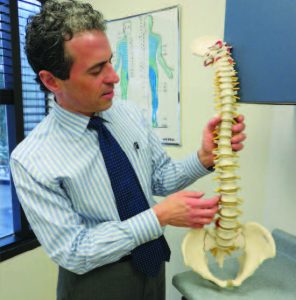




 DRIVEN TO CARE
DRIVEN TO CARE A SURE BET!
A SURE BET!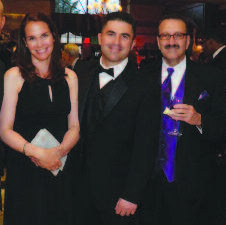


 “In pursuit of making great pizza,” Richer says, “I learned how to make great bread.”
“In pursuit of making great pizza,” Richer says, “I learned how to make great bread.” He is sitting in the dining room at Razza, where he has just finished shaping his dough into the now-iconic Razza shape that resembles a French batard. He glances over at the loaves, resting in individual linen-lined baskets. He consults with Octavio Gadea, who works with him on the bread. Then he continues.
He is sitting in the dining room at Razza, where he has just finished shaping his dough into the now-iconic Razza shape that resembles a French batard. He glances over at the loaves, resting in individual linen-lined baskets. He consults with Octavio Gadea, who works with him on the bread. Then he continues. Razza Right Now
Razza Right Now Let’s Eat
Let’s Eat


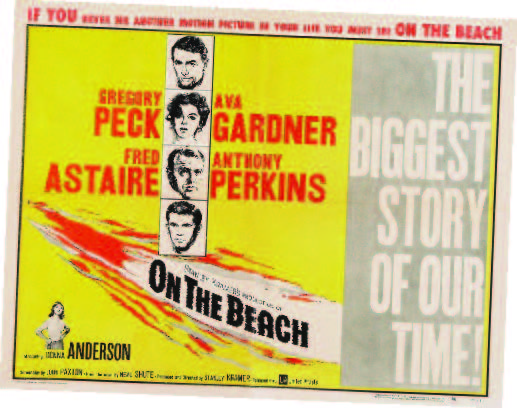
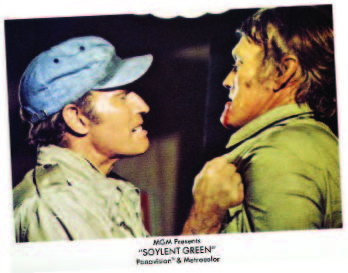




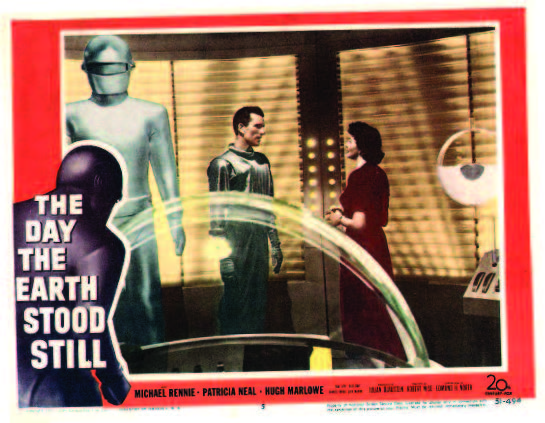

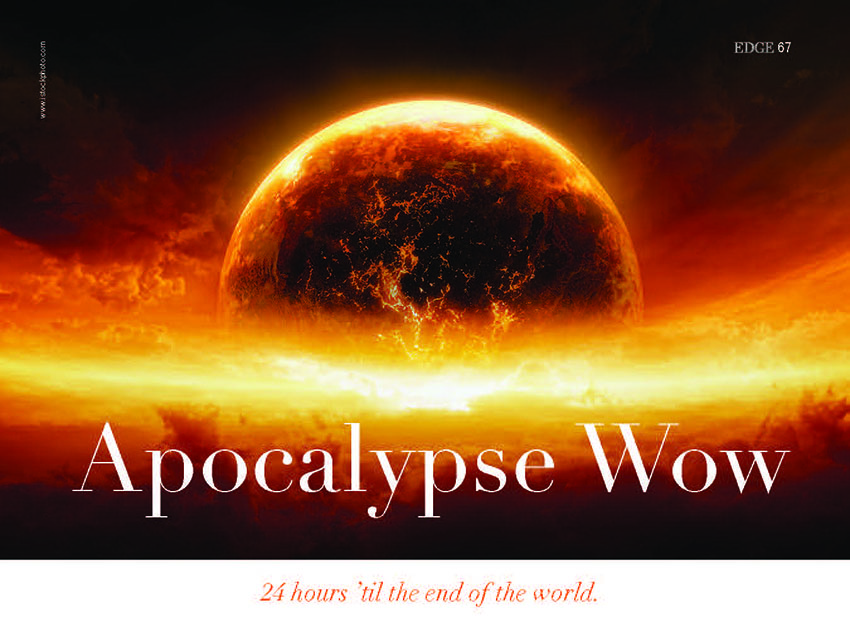


 Unfortunately, for some people and their pets the first boarding experience is also the last. Certain pets struggle with the boarding environment and develop nervous, defensive behaviors. The combination of an unfamiliar environment, strange people and animals, and changes to the typical routine can completely change an animal’s behavior. During my time working at the shelter, I noticed that some animals never quite adjusted to living in a kennel. We struggled to get these animals adopted because of these nervous, erratic, unpredictable, defensive, and even aggressive behaviors. Some animals responded with just a little extra attention, including the dog I adopted. As a last resort, to free up space in the shelter, we would place these nervous animals in foster care, where their behavior and temperament improved dramatically, making them much more adoptable. Some other downsides to pet boarding are the higher cost and risk of exposing your pet to disease. Most kennels require vaccinations, but there are a few illnesses (such as kennel cough) that spread in this type of environment.
Unfortunately, for some people and their pets the first boarding experience is also the last. Certain pets struggle with the boarding environment and develop nervous, defensive behaviors. The combination of an unfamiliar environment, strange people and animals, and changes to the typical routine can completely change an animal’s behavior. During my time working at the shelter, I noticed that some animals never quite adjusted to living in a kennel. We struggled to get these animals adopted because of these nervous, erratic, unpredictable, defensive, and even aggressive behaviors. Some animals responded with just a little extra attention, including the dog I adopted. As a last resort, to free up space in the shelter, we would place these nervous animals in foster care, where their behavior and temperament improved dramatically, making them much more adoptable. Some other downsides to pet boarding are the higher cost and risk of exposing your pet to disease. Most kennels require vaccinations, but there are a few illnesses (such as kennel cough) that spread in this type of environment. In cases where pet-sitting and boarding aren’t viable, the best option may be to travel with your pet. For the record, a high percentage of people who choose to travel with their pets do so because they are the ones with separation anxiety. Whatever is behind that choice, pet-friendly hotels are becoming more popular around the world and offer a surprising variety of amenities. Pet owners can find hotels that offer charming welcome gifts, comfortable pet beds, designated areas for walking, playing or bathroom breaks, pet room service, day care, and even luxury spas. Guests can also expect informed concierge services that can point them to pet-friendly attractions in the area. To find pet-friendly hotels in the United States, plug your destination into Pet-Friendly Hotels (pet-friendly-hotels.net) or Pets Welcome (petswelcome.com). According to Pets Welcome, these are the Top 10 Pet-Friendly Destinations
In cases where pet-sitting and boarding aren’t viable, the best option may be to travel with your pet. For the record, a high percentage of people who choose to travel with their pets do so because they are the ones with separation anxiety. Whatever is behind that choice, pet-friendly hotels are becoming more popular around the world and offer a surprising variety of amenities. Pet owners can find hotels that offer charming welcome gifts, comfortable pet beds, designated areas for walking, playing or bathroom breaks, pet room service, day care, and even luxury spas. Guests can also expect informed concierge services that can point them to pet-friendly attractions in the area. To find pet-friendly hotels in the United States, plug your destination into Pet-Friendly Hotels (pet-friendly-hotels.net) or Pets Welcome (petswelcome.com). According to Pets Welcome, these are the Top 10 Pet-Friendly Destinations


 BYOB…WITH A TWIST
BYOB…WITH A TWIST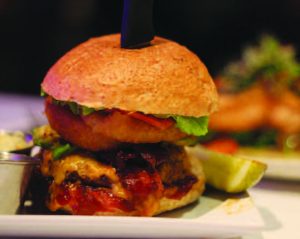




 Grain & Cane Bar and Table • Maine Lobster Benedict
Grain & Cane Bar and Table • Maine Lobster Benedict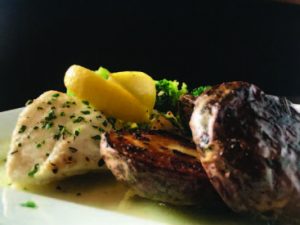 The Thirsty Turtle • Pork Tenderloin Special
The Thirsty Turtle • Pork Tenderloin Special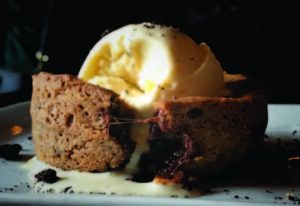 The Thirsty Turtle • Brownie Sundae
The Thirsty Turtle • Brownie Sundae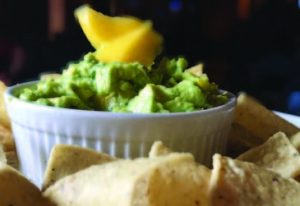 The Famished Frog • Mango Guac
The Famished Frog • Mango Guac Arirang Hibachi Steakhouse • Pork Belly Bao Buns
Arirang Hibachi Steakhouse • Pork Belly Bao Buns Daimatsu • Sushi Pizza
Daimatsu • Sushi Pizza Garden Grille • Beet & Goat Cheese Salad
Garden Grille • Beet & Goat Cheese Salad LongHorn Steakhouse • Outlaw Ribeye
LongHorn Steakhouse • Outlaw Ribeye Outback Steakhouse • Bone-In Natural Cut Ribeye
Outback Steakhouse • Bone-In Natural Cut Ribeye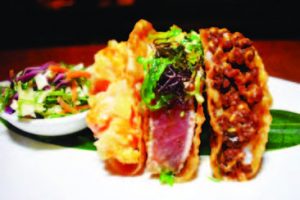 Arirang Hibachi Steakhouse • Japanese Taco
Arirang Hibachi Steakhouse • Japanese Taco Ursino Steakhouse & Tavern • House Carved 16oz New York Strip Steak
Ursino Steakhouse & Tavern • House Carved 16oz New York Strip Steak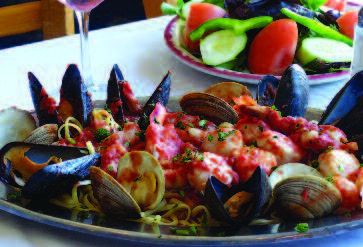












 As Trinitas worked to stay a step ahead of the coronavirus this past spring and deliver a high level of healthcare to those who needed to be admitted, another part of the hospital—the Ambulatory Surgery Center (ASC)—was closed and waiting to safely reopen, and is now firing on all cylinders. “Ambulatory” in the case of the ASC reflects its Latin root (abulatore: to walk). The ASC is an outpatient facility that allows our clients to have same-day procedures. Although there is always some risk in any type of surgery, the layer-upon-layer of Covid-19 precautions that have been adopted, as Trinitas doctors learn more about the virus, has minimized the risk of contracting and spreading the virus in the main hospital as well.
As Trinitas worked to stay a step ahead of the coronavirus this past spring and deliver a high level of healthcare to those who needed to be admitted, another part of the hospital—the Ambulatory Surgery Center (ASC)—was closed and waiting to safely reopen, and is now firing on all cylinders. “Ambulatory” in the case of the ASC reflects its Latin root (abulatore: to walk). The ASC is an outpatient facility that allows our clients to have same-day procedures. Although there is always some risk in any type of surgery, the layer-upon-layer of Covid-19 precautions that have been adopted, as Trinitas doctors learn more about the virus, has minimized the risk of contracting and spreading the virus in the main hospital as well.

 The $5.2 million 9,500 square-foot Ambulatory Surgery Center opened in 2014. Since then, more than 10,000 patients have been treated there.
The $5.2 million 9,500 square-foot Ambulatory Surgery Center opened in 2014. Since then, more than 10,000 patients have been treated there.
